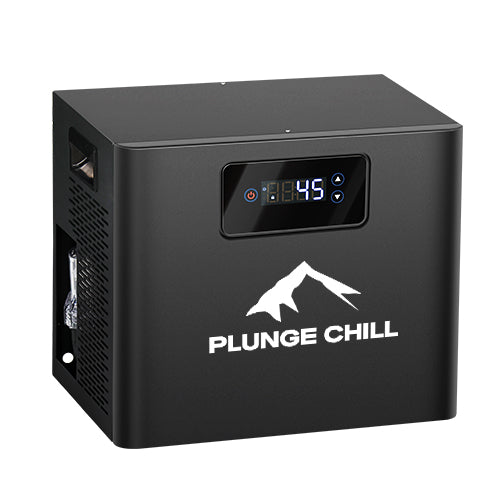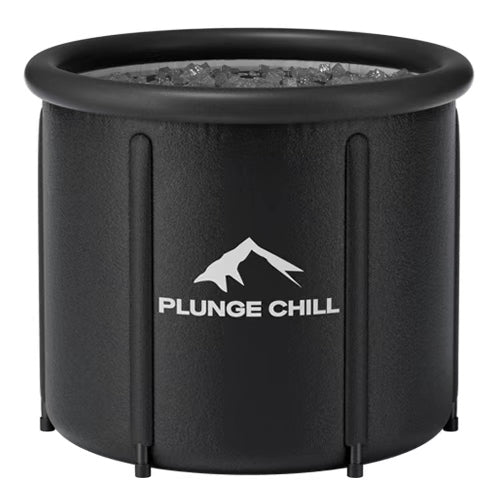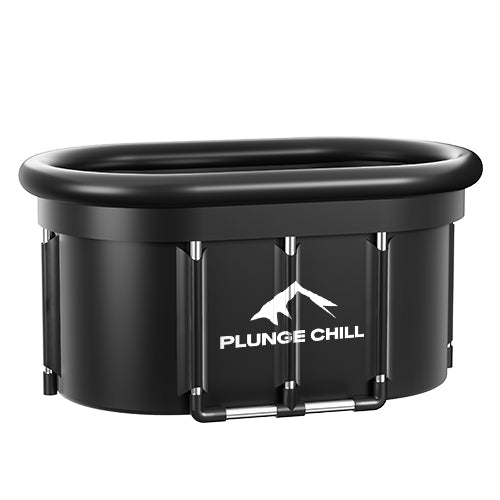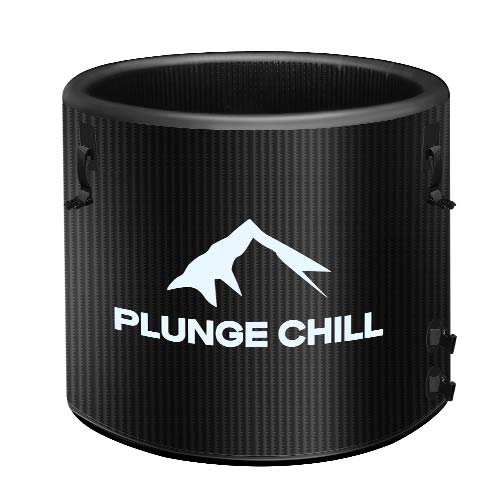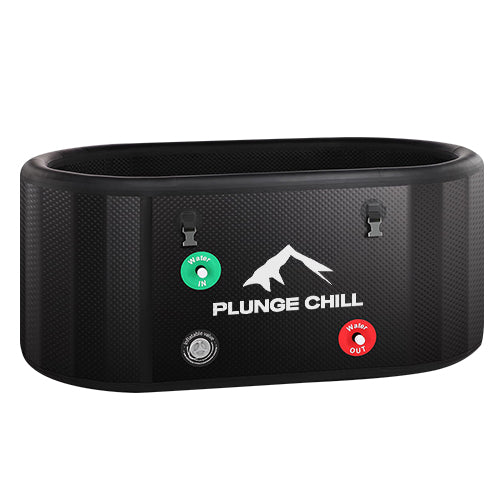Cold water immersion has traveled a long road from sacred rivers and stone bathhouses to filtered home plunges with digital temperature control. What began as a folkloric act of purification and vigor became a medical “water-cure,” and then a measured tool for athletic recovery and mental resilience. As an editor who also works at a jewelry bench and cold-plunges after long days to calm hand and wrist inflammation, I have seen the practice from both sides: the lore that draws people in, and the practical, science-informed habits that keep it safe and useful. This article traces the evolution, distinguishes tradition from evidence, and offers pragmatic guidance on getting started, caring for your setup, and even protecting fine jewelry during cold exposure. Where the historical record or mechanisms are uncertain, I say so and share confidence levels in those inferences.
What Counts as a Cold Water Bath?
Cold water immersion, often shortened to CWI, is the deliberate submersion of the body in cold water for a short, controlled period to prompt physiological and psychological responses. Ice baths, cold plunges, and open-water dips are all versions of the same practice. Hydrotherapy is the broader umbrella: therapeutic use of water at various temperatures for health or recovery. Contrast therapy means alternating hot and cold exposures, a tradition born in Greco‑Roman and Nordic cultures and still common today in sauna-to-snow or hot-to-cold routines.
Across modern brand and wellness sources such as AlphaSauna, CUAN Ice Baths, Haven of Heat, Ice Barrel, Sun Home Saunas, and Zenwave Wellness, the practical definition is consistent: brief full‑ or partial‑body immersion in cold water to reduce soreness, ease fatigue, and support overall recovery and well‑being. Academic or medical framing appears in museum and university contexts too. The University of Rochester Medical Center describes nineteenth‑century “water‑cure” establishments, where hydrotherapy offered accessible care, especially for women, and helped build a reform movement around hygiene and agency. Contemporary overviews such as Stanford’s Innovate Tech Hub summarize mechanisms like vasoconstriction, stress‑system activation, and endorphin release.
From Sacred Waters to Sanatoriums: A Brief History
Antiquity: Egypt, Greece, and Rome
Egyptian medical texts, notably the Edwin Smith Papyrus, mention cold applications for injuries. Dates reported in brand histories range from roughly 1600 BCE to earlier traditional claims; the precise origin date is debated, but the association of cold with cleansing and rebirth in Nile rituals is recurrent in historical accounts from wellness publishers and heritage blogs (inference; moderate confidence).
In Greece, physicians such as Hippocrates framed bathing in medical terms, advocating cold exposure for certain ailments and recovery. The Romans standardized the experience. Public thermae featured architectural sequences from hot to tepid to the frigidarium, a cold pool used after heat. This alternation was thought to cleanse, invigorate, and fortify. Roman aqueducts scaled bathing culture so that large complexes served many people daily. Commercial and educational sources agree on this broad arc and emphasize the social dimension of baths alongside their therapeutic aims.
Nordic, Slavic, and Viking Traditions
Across Scandinavia and Russia, cultural cycles of sauna heat followed by icy water or snow persisted from early periods to the present. Viking tales celebrate cold endurance as a marker of toughness and readiness. Modern winter swimming clubs and banya rituals keep the alternation alive for community bonding and perceived resilience benefits. These accounts are consistent in Nordic heritage and brand narratives, with outcomes often reported as mood elevation and vigor rather than quantified clinical effects.
East Asia and Ritual Purification
In Japan’s Shinto misogi, cold waterfalls and immersion symbolize purification. Japanese onsen culture also includes cooler pools and alternating temperatures. These practices anchor cold exposure in spiritual and communal life as much as in physical hygiene. As with many ritual traditions, claims are qualitative and experience‑driven rather than measured in trials (inference; high confidence about cultural practice; low confidence about specific health magnitudes).
Monastic Preservation and Renaissance Revival
After Rome’s decline, communal bathing shrank in parts of Europe, but monastic communities maintained cold immersion for spiritual and hygienic purposes. Renaissance scholars revisited classical water remedies, and figures like Paracelsus reanimated interest in temperature and health. Thomas Jefferson’s correspondence shows how eighteenth‑ and nineteenth‑century elites debated bathing as invigorating discipline, with cold water associated with vigor and hot water with luxury and potential debility, reflecting a broader preventive ethos reported by the Monticello research library.
The Eighteenth–Nineteenth‑Century Water‑Cure
Hydrotherapy crystallized as a system under practitioners such as Vincenz Priessnitz and Sebastian Kneipp, who paired water treatments with exercise, herbal medicine, and diet; William Cullen and later physicians prescribed graded cold exposures for specific complaints. Women played visible roles as practitioners, patients, and advocates in U.S. water‑cure centers, with the URMC exhibit highlighting how hydrotherapy clinics became spaces for health access and social reform. This period yielded the first quasi‑systematic protocols and institutions devoted to water as therapy, even if methodology would not meet modern trial standards.
Twentieth Century to Today
By the twentieth century, athletes adopted cold plunges for post‑exercise recovery, an application repeated across contemporary wellness brands and sports medicine write‑ups. Some sources, such as Stanford’s Innovate Tech Hub, describe typical immersion temperatures in the 50–59℉ range for short durations, particularly for beginners. TheChallenge, a community initiative, references research in the Journal of Physiology and PNAS that examines cold shock responses and immune modulation. These references indicate mechanisms such as sympathetic activation and catecholamine changes; precise effect sizes for performance can be mixed and context‑dependent, a nuance also echoed by community and brand education pages. In the past decade, at‑home plunge products expanded access with features like precise temperature control, filtration, and ergonomic designs reported by makers including Haven of Heat, Sun Home Saunas, and Zenwave Wellness.

Folklore and Science: Where They Meet and Where They Diverge
Cold‑water lore promises purification, bravery, resilience, and communal bonding. Modern science tends to ask narrower questions about post‑exercise soreness, mood, and stress markers, or about safety windows for exposure. Some mechanisms are plausible and reasonably supported for short‑term outcomes, such as acute vasoconstriction, reduced swelling, and perceived soreness after hard training. Mood and alertness effects are also commonly reported, with endorphin and noradrenergic responses offered as explanations in science‑communication articles. Claims that immersion universally “boosts immunity” or prevents illness require careful context because human trials vary in design and quality, and many brand articles cite benefits qualitatively without controlled effect sizes.
A balanced reading emerges across the notes: tradition and lived experience seeded the practice, nineteenth‑century water‑cures gave it structure, and modern usage blends tradition with modest, scenario‑specific evidence. For sports recovery, short cold immersions directly after intense effort may help people feel better and return to training; for long‑term performance outcomes, the literature is mixed and protocol‑specific. For mental well‑being, users often report calmer mood and clarity after a brief plunge. The evidence base is growing, but many commercial sources acknowledge qualitative claims and lack of precise statistics.
Who Benefits, Who Should Be Cautious
Athletes frequently plunge after competition or heavy training to limit soreness and manage workload. Office workers and creatives report mood benefits, especially when cold exposure becomes a mindful, brief ritual that breaks up the day. However, cold shock is real, and people with cardiovascular disease, Raynaud’s phenomenon, pregnancy, or respiratory conditions should be cautious and consult a clinician before starting, guidance that appears across educational publishers and brand safety notes. New users should begin with shorter durations, keep water tolerably cold rather than extreme, avoid immersing alone, and ensure a warm‑up plan immediately afterward. These points are repeatedly emphasized by Stanford’s Innovate Tech Hub and community projects like TheChallenge.
A Practical Guide to Starting Safely
The simplest way to begin is with cool‑to‑cold showers or brief, partial immersions. Many educational pages and brand guides align around the same pattern: start gradually, emphasize consistency, and keep sessions short and controlled rather than chasing extreme temperatures. Beginners often do well with water in a cool but tolerable range for only a few minutes, breathing calmly through the initial shock and exiting while feeling in control. Temperature and duration targets vary by source and tolerance; 50–59℉ is widely cited as a common immersion range for short exposures in non‑medical contexts, but dwell time should favor caution and be trimmed if sensation or breathing feels unsafe. This is an inference synthesized from the Stanford overview and multiple brand guides, and it aligns with my personal experience that regular, modest practice beats rare, heroic efforts for building comfort and habit (inference; high confidence for habit building, moderate confidence for temperature ranges).
Rewarming matters as much as cooling. Have dry clothing and a warm drink ready and avoid sprinting directly to a very hot shower, which can sometimes cause lightheadedness after a hard sympathetic surge. There is no award for staying longer; leave the water wanting a little more, not less.

Cold Water and Jewelry: What a Jeweler Wishes Everyone Knew
As a jeweler who cold‑plunges, I remove rings, bracelets, and necklaces before immersion. Rapid temperature change can stress certain gem settings, adhesives in fashion pieces, and delicate solders. Porous and organic gems, including opal, pearl, turquoise, coral, and some treated stones, dislike abrupt thermal swings and can craze or dull; this guidance is standard in bench practice and customer care sheets even if not always spelled out in cold‑plunge literature (inference; high confidence from bench experience). Chlorine and oxidizers in poorly balanced plunge water can tarnish sterling and compromise gold plating faster than normal wear. If you choose to wear a smartwatch to time your session, confirm its cold‑water and pressure ratings and consider a fabric strap that dries quickly to prevent skin irritation. After the plunge, rinse jewelry separately in lukewarm clean water and dry with a soft cloth if it was exposed, which reduces residue buildup and preserves finishes (inference; high confidence from studio care).

Choosing and Maintaining a Cold Plunge Setup
Modern options span bathtubs with ice, inflatable or portable tubs, and dedicated, filtered plunge units. Brands such as Haven of Heat and Sun Home Saunas consistently highlight three features that truly change the experience: stable temperature control, reliable filtration, and ergonomics that let you sit calmly without bracing your body. From my testing, stability and cleanliness are the biggest quality‑of‑life upgrades. A unit that drifts warm undermines habit; a setup that is hard to keep clean undermines safety and enjoyment. These are practical considerations rather than formal study outcomes, but they determine whether people keep using the device three months in (inference; high confidence from user experience and buyer feedback patterns).
Electrical safety and placement deserve forethought. Use a GFCI‑protected circuit, keep cords tidy and dry, and ensure the floor handles the static load of water and user. Plan for drainage without splashing adjacent rugs or hardwood. Cover the tub to limit debris and heat loss, and follow the maker’s cleaning guidance; even a well‑filtered tub benefits from periodic water changes. If you use any additives for sanitation, check compatibility with finishes and avoid chemistry that accelerates tarnish on jewelry or hardware.
Quick Comparison Table: Plunge Options at a Glance
|
Option |
What It Is |
Strengths |
Trade‑offs |
Best For |
|
Bathtub with ice |
Home tub plus ice or frozen bottles |
Cheapest, immediate |
Temperature drifts, messy ice logistics |
Occasional dips, testing the habit |
|
Inflatable/portable tub |
Collapsible vessel, manual ice or chiller add‑on |
Affordable, space‑saving |
More setup, water turnover work |
Renters, small spaces |
|
Purpose‑built plunge |
Insulated tub with chiller, filtration, controls |
Consistent temp, clean, ergonomic |
Higher cost, needs power space |
Regular users, households |
|
Natural water |
Lake, sea, river, waterfall access |
Community, outdoors, ritual |
Weather‑dependent, safety variables |
Seasoned dippers with safe access |
The table reflects common features reported across brand literature and community guides. Specifics vary by product; evaluate noise, serviceability, and warranty support directly with suppliers (inference; high confidence).
Folklore Claims Versus Scientific Understanding
|
Theme |
Traditional Belief |
What Modern Sources Say |
|
Purification and renewal |
Cold water cleanses body and spirit and prepares one for rites of passage |
Traditions across Shinto, Nordic, and Greco‑Roman cultures affirm the meaning; these are qualitative outcomes tied to ritual and community rather than measured endpoints |
|
Recovery after exertion |
Cold restores the body after strain or battle |
Sports and wellness sources agree that short post‑exercise immersions can reduce perceived soreness and swelling; performance impacts are protocol‑dependent and mixed in the literature |
|
Mental clarity and mood |
Cold builds toughness and brightens the mind |
Educational summaries and brand reports describe acute alertness and mood lift, plausibly via stress‑system activation and endorphins; precise magnitudes vary |
|
Immunity and resilience |
Cold hardens the body against illness |
Mechanisms such as sympathetic activation are plausible; community initiatives cite Journal of Physiology and PNAS articles, but generalized immunity claims should be treated cautiously without specific dose‑response trials |
This synthesis draws from TheChallenge’s research notes alongside Stanford’s overview and multiple brand histories. Where lore outruns data, the safe posture is to treat cold as a useful habit for how you feel and recover, not as a cure‑all.
Care and Buying Tips That Actually Matter
Choose the cold path that you will repeat, not the one that looks best on paper. If the friction of hauling ice will make you skip days, a chiller and filter may be worth it. If space or budget is tight, a portable tub or the regular bathtub for one or two short dips per week can be excellent. Make temperature and cleanliness effortless so that the only hard part is the first breath. Confirm electrical protection, weight‑bearing floors, and easy drainage before you install anything permanent. If you intend to wear a ring or smartwatch, test corrosion risks on inexpensive pieces first, keep exposures brief, and rinse after; better yet, remove jewelry altogether. These are practical constraints from lived use and workshop care rather than medical claims (inference; high confidence).
Takeaway
Cold water immersion sits at a rich intersection of myth, community, and physiology. The ancients layered meaning onto cold, nineteenth‑century water‑cures added structure, and modern users borrow the best of both worlds. Keep expectations grounded, build your routine gradually, and invest in safety and cleanliness over extremes. If you also care for fine jewelry, take it off, store it safely, and keep the plunge about your body and breath.
FAQ
How cold should the water be for a beginner?
Educational summaries commonly cite a cool‑to‑cold range with brief exposures rather than extremes. Stanford’s Innovate Tech Hub mentions 50–59℉ as a typical immersion range for short, controlled sessions. Start on the warmer end and shorter duration and build slowly as comfort grows.
Is cold water immersion good after every workout?
Many athletes use it after especially hard sessions to manage soreness and feel ready for the next day. The effect on long‑term performance can depend on timing and training goals, and the literature is mixed. If muscle growth is your priority, you may choose to reserve plunges for the hardest or most fatiguing days.
Can cold plunges improve mood or reduce stress?
Users often report calmer mood and bright alertness afterward. Mechanisms described in science communication, and referenced by TheChallenge, include sympathetic activation and neurochemical changes. Treat these benefits as supportive, not a substitute for professional care when needed.
Who should avoid cold immersion or get medical advice first?
People with cardiovascular disease, Raynaud’s phenomenon, pregnancy, or respiratory conditions should speak with a clinician before trying cold immersion. Never plunge alone, minimize risks in natural waters, and rewarm progressively after exiting.
Will cold water damage jewelry or gemstones?
Rapid temperature change can stress certain settings and sensitive gems, and oxidizers in water can tarnish silver. The most reliable approach is to remove jewelry before immersing and to rinse and dry any pieces that were exposed. This is grounded in standard jewelry care rather than clinical research.
What features matter most when buying a plunge tub?
Stable temperature control, reliable filtration, and comfortable ergonomics are the features that most influence whether you keep using your tub. Those priorities come up repeatedly in brand literature and match personal experience of what sustains the habit.
References
|
Publisher or Institution |
Focus in the Notes |
|
AlphaSauna |
Historical overview from antiquity to modern sports and beauty; practical starting guidance and cautions |
|
CUAN Ice Baths |
Cross‑cultural history and modern revival; home and portable access emphasis |
|
Haven of Heat |
Long‑form history with features of modern at‑home tubs and technology |
|
Ice Barrel |
Ancient Greek and Roman thermalism; Renaissance revival and modern recovery |
|
Sun Home Saunas |
Historical survey from Egypt to modern applications; sports and contrast therapy |
|
TECKWAVE |
Cultural mosaic including Misogi, Vikings, banya, and Tummo; modern adoption across communities |
|
TheChallenge.org |
Community program citing Journal of Physiology and PNAS on cold‑shock and immune modulation |
|
URMC, University of Rochester |
Nineteenth‑century water‑cure and women’s roles in hydrotherapy and reform |
|
Monticello Research Library |
Eighteenth–nineteenth‑century bathing practices and perceptions in the U.S. |
|
Stanford Innovate Tech Hub |
Mechanisms, safety considerations, and practical temperature guidance |
|
Zenwave Wellness |
Timeline tying ancient sources to modern devices and home practice |
|
Renu Therapy |
Greek and Roman history and modern home adoption framing |
This article draws on the sources above for history and framing. Practical buying, installation, and jewelry‑care notes reflect professional and personal experience rather than clinical study.
- https://webapp-new.itlab.stanford.edu/cold-bath
- https://www.academia.edu/129630060/Tracing_the_Values_of_Fading_Rural_Architectural_Heritage_The_Case_of_Cold_Water_Baths_in_Western_Anatolia
- https://pdxscholar.library.pdx.edu/cgi/viewcontent.cgi?article=1228&context=younghistorians
- https://libguides.urmc.rochester.edu/hom-exhibits/water-cure
- https://pmc.ncbi.nlm.nih.gov/articles/PMC9012715/
- https://muse.jhu.edu/pub/59/article/182356
- https://thechallenge.org/ancient-roots-of-cold-exposure-and-ice-baths
- https://bathmedicalmuseum.org/cold-water-bathing-in-bath-a-public-health-perspective/
- https://daily.jstor.org/when-americans-started-bathing/
- https://www.monticello.org/research-education/thomas-jefferson-encyclopedia/bathing/
Disclaimer
By reading this article, you acknowledge that you are responsible for your own health and safety.
The views and opinions expressed herein are based on the author's professional expertise (DPT, CSCS) and cited sources, but are not a guarantee of outcome. If you have a pre-existing health condition, are pregnant, or have any concerns about using cold water therapy, consult with your physician before starting any new regimen.
Reliance on any information provided in this article is solely at your own risk.
Always seek the advice of a qualified healthcare provider with any questions you may have regarding a medical condition, lifestyle changes, or the use of cold water immersion. Never disregard professional medical advice or delay in seeking it because of something you have read in this article.
The information provided in this blog post, "The Evolution of Cold Water Baths from Folklore to Modern Science," is for informational and educational purposes only. It is not intended to be a substitute for professional medical advice, diagnosis, or treatment.
General Health Information & No Medical Advice
